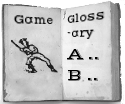Pize Ball: Difference between revisions
Jump to navigation
Jump to search
(Set Game Eras to Predecessor) |
No edit summary |
||
| Line 2: | Line 2: | ||
|Term=Pize Ball | |Term=Pize Ball | ||
|Game Family=Kickball | |Game Family=Kickball | ||
|Game Eras=Predecessor | |Game Eras=Predecessor | ||
|Invented Game=No | |||
|Description=<p>a game defined in the OED as “a game similar to Rounders in which a ball is hit with the flat of the hand.” The game is mainly associated with the English North Country, and is said to feature three or four ‘tuts,’ or stopping-places. The first cited use appeared in 1796. Gomme (page 45) adds that if the batter-runner is hit before reaching on of the “tuts” he is “said to be <em>burnt</em>, or out.</p> | |||
|Sources=<p><span>Alice Bertha Gomme, </span><span style="text-decoration: underline;">The Traditional Games of England, Scotland, and Ireland<em>, </em></span>Volume 2 (New York: Dover [reprint -- original publication 1898], 1964)<span>, page 45.</span></p> | |||
|Has Supplemental Text=No | |||
}} | }} | ||
Revision as of 15:15, 13 March 2017
| Game | Pize Ball |
|---|---|
| Game Family | Kickball |
| Location | |
| Regions | |
| Eras | Predecessor |
| Invented | No |
| Tags | |
| Description | a game defined in the OED as “a game similar to Rounders in which a ball is hit with the flat of the hand.” The game is mainly associated with the English North Country, and is said to feature three or four ‘tuts,’ or stopping-places. The first cited use appeared in 1796. Gomme (page 45) adds that if the batter-runner is hit before reaching on of the “tuts” he is “said to be burnt, or out. |
| Sources | Alice Bertha Gomme, The Traditional Games of England, Scotland, and Ireland, Volume 2 (New York: Dover [reprint -- original publication 1898], 1964), page 45. |
| Source Image | [[Image:|left|thumb]] |
| Comment | Edit with form to add a comment |
| Query | Edit with form to add a query |
| Has Supplemental Text |
Comments
<comments voting="Plus" />
